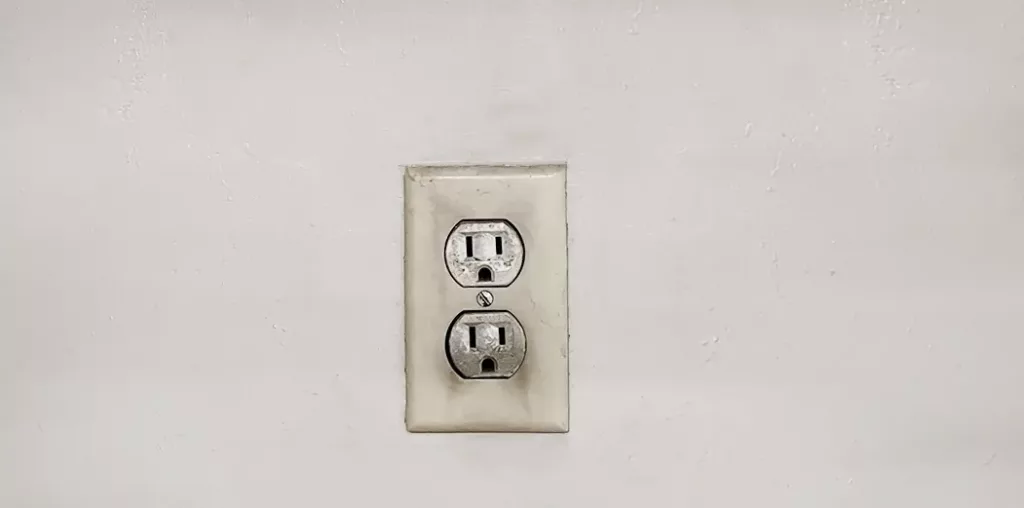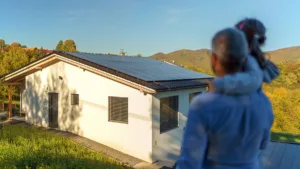When the price of copper went up in the mid-60s, houses were wired with aluminum, which is an even better conductor of electricity, a practice that continued until the early 70s. However, this more affordable solution turned out to be much less safe. In this article, you’ll learn everything you need to know about the dangers of having outdated wiring in your home, and how to make aluminum wiring safe.
Why Aluminum Wiring is Dangerous
Aluminum wire conducts electricity safely and efficiently. The problem arises with the connections in the outlets and switches. When you connect an aluminum wire to a receptacle designed for copper wiring, whether it’s a hard-wired appliance, a light switch, or an outlet, you run the risk of having them to overheat. This danger increases as the electrical load increases; for instance, if there are too many appliances running at the same time, or if there are too many outlets on the same circuit.
A study commissioned by the U.S. Consumer Product Safety Commission (CPSC) found that homes with aluminum wiring were 55 times more likely to reach “fire hazard conditions,” than homes with copper wiring. To address the issue, in 1971, copper clad aluminum wiring started to replace the aluminum wiring in residential construction in the United States, until the price of copper went down in 1977, and copper was once again the standard.
In addition to your safety, which is paramount, selling a home with aluminum wiring can be a problem. In fact, some insurance companies won’t even insure homes with aluminum wiring.
Warning Signs of Overheating Aluminum Wiring

If you aren’t sure what type of wiring was used in your home, and you haven’t had a professional electrical inspection, it can be difficult to know if your electrical connections are at risk of overheating. The warning signs of outdated wiring can be easy to miss, and you may not even know you have aluminum wiring in your home until it’s too late. These signs of overheating aluminum wiring might include:
- Outlets, switches, or walls feel warm
- You smell burning plastic near outlets or switches
- Outlets that are scorched or melted
- Flickering lights that can’t be attributed to appliance or other external cause
Home electrical systems must safely manage modern-day demands for energy consumption, and the average home has many more electronics and appliances compared to 50 years ago. So having a professional electrical inspection to determine if you have aluminum wiring is extremely important, especially if your home was built in the 1960s or 1970s.
Professional Electrical Inspection
A residential electrician can inspect your electrical panel to determine if you have aluminum wiring. Do not try to do this yourself. During this inspection, your electrician can also inspect your outlets for signs of danger or work that may have been done in the past to make the connections safer. They can also identify any other electrical safety issues that could contribute to the overheating of your outlets.
How to Make Aluminum Wiring Safe

If your electrician finds aluminum wiring in your home, there are several different approaches to making your home safe. An electrician can determine if any of these remedies has already been made, and outline your options, if no counter measures have been implemented. What follows are the three ways an electrician can make your home safe from the dangers of your aluminum wiring:
Rewire entire home
The most guaranteed method for addressing the problem of aluminum wiring is replacing all the wiring in the house with copper wiring. However, this might be an expense that is hard to absorb, and the job will take much longer.
Fix Connections by Pig-tailing with Copper Wire
The point of connection with the outlet or switch can be patched by using copper wire with a technique called pig-tailing, that crimps a short piece of copper wire to the aluminum wire, so that the current is conducted from the aluminum wire to the copper wire that connects to the receptacle. This should only be performed by a licensed and insured electrician. COPALUM connectors are preferred by the CPSC, electricians, and home inspectors.
AlumiConn connectors are also effective, but not optimal. They are bulkier and use screws instead of crimping. With this method, you may also need to have your electrical panel replaced.
Swap out non-CO/ALR outlets/switches
Finally, an electrician can swap out all outlets and switches with ones that are compatible with aluminum wiring. Pig-tailing may be a more cost-effective solution, however.
Request an Electrical Inspection to Identify Electrical Fire Hazards
Aluminum wiring can pose a threat to you and your family. With so many effective ways to deal with it, there’s everything to gain by calling an electrician today, if your home was built in the 60s or 70s, to make sure you and yours are safe from electrical fires, which can result from overheating outlets, switches or appliances. The certified electricians at Schafer Electrical are here to answer any of your electrical safety questions. Contact our team today at 707-545-3300 or online to schedule a safety inspection today.





No comments yet. Add the first comment